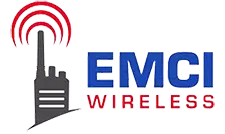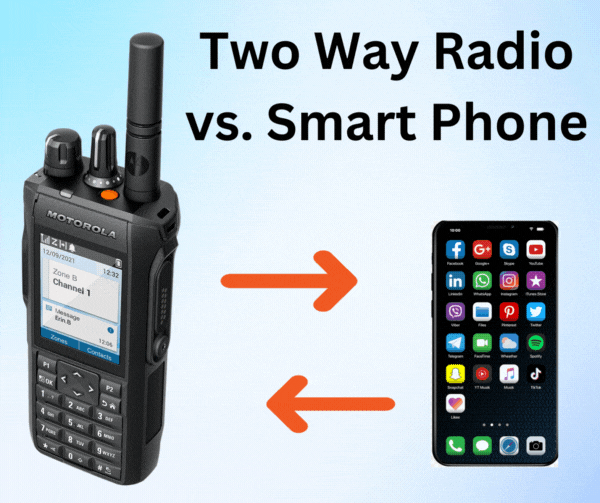When your focus is getting the job done, you don’t have time to download the app or wait for the other person to answer the phone. You need instant, easy, and clear communication. This is why two way radio systems have many benefits over a cell phone. Professional two-way radio communication provides an effective and reliable solution customized for each business.
While cell phones are the cornerstone to our personal communications, those who work in sectors like education, manufacturing, healthcare, law enforcement, or fire & EMS cannot always rely on this technology. Two-way radios offer so many more relevant benefits and can be relied upon in nearly every situation. From longer battery life to lower cost of ownership, here are 10 benefits to consider when deciding between cell phones or two-way radios.
One to Many Communication Capabilities
When you communicate via phone, you are locked into one-on-one communication or a three-person call. Digital two-way radios offer prompt one-to-many communication, meaning users can communicate with the whole team much more efficiently than with a cell phone.
With radios, you can communicate with the entire team instantly because you don’t have to wait for a connection. Just push, talk, done.
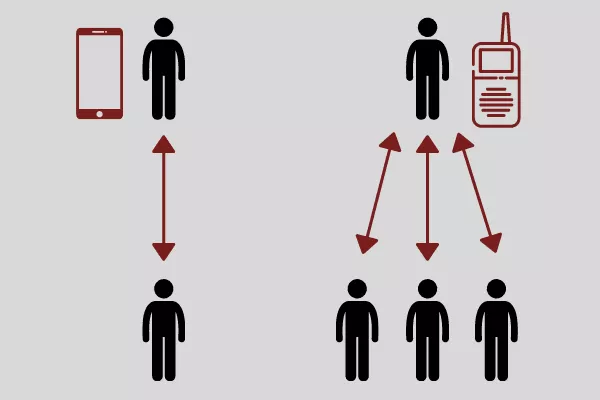
Longer Battery Life
What good is a communications tool if it dies? Most cell phones lose the vast majority of their battery life during a typical workday for those who use them regularly. This means that if your organization chooses to rely on cell phones for communication, you may be left in the dark at the worst possible times.
Two way radios carry a significantly longer battery life than cell phones and have portable batteries that you can pop in to ensure communication in emergency power outages or extreme circumstances.
For example, what if there is an emergency on your campus or at your plant but your cell phone was dead? How would you communicate? By swapping out your cell phones for digital radios, you eliminate the stress of not being able to communicate due to a dead battery, as two-way radios can last twice as long as typical cell phones.
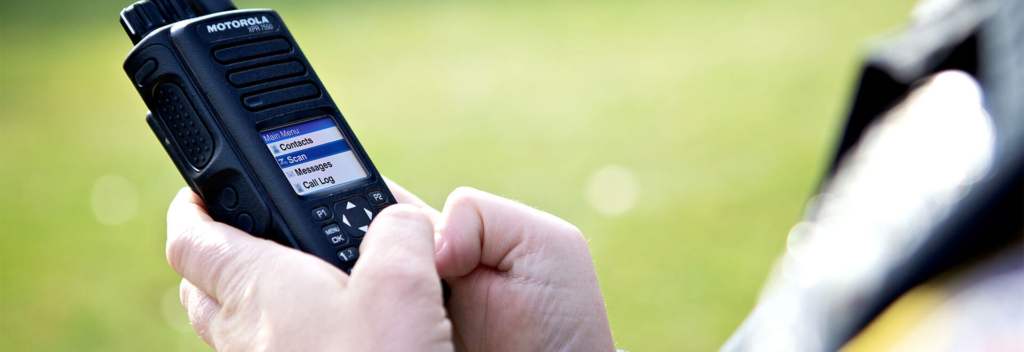
Better Network Security
You don’t have to worry about a breach in security, a phone being bugged, or a breakdown in network coverage. Two way radios are the best way of safe, secure communication.
Digital two-way radios offer a vast improvement in terms of security, as they help to ensure privacy via a closed network. On the other hand, cell phones use public networks to communicate, leaving those communications vulnerable to security threats.

Improved Call Quality and Coverage
Oftentimes, you don’t get reliable cell service when you’re working on a construction site, in remote areas, or on the road. With two way radios, you have clear communication and quality sound anywhere, anytime.
With cell phones, users become vulnerable to dead spots and have to rely on their proximity to cell towers for their reception. This isn’t practical for those in public safety, manufacturing, healthcare, or education sectors. These workers need to remain constantly connected and dropped calls hinders the communication that they rely on in order to stay safe and efficient.
With two-way radios, users no longer have to rely on the cell tower or have to worry about dead spots. They receive excellent reception and an expanded coverage area, leading to a better communications experience.
Noise-Cancelling Technology
Speaking of call quality, cell phone calls can be easily disrupted by other noises in the environment, i.e. machines, traffic, or just simply other people. This is due to the basic microphone technology used by our cell phones that tend to pick up everything without cancelling anything.
This can be avoided by communicating via radio. Most two-way radios now offer some form of noise cancelling technology that can help eliminate wind interference and other common noises. This ensures clear communication regardless of the environment the user is in.
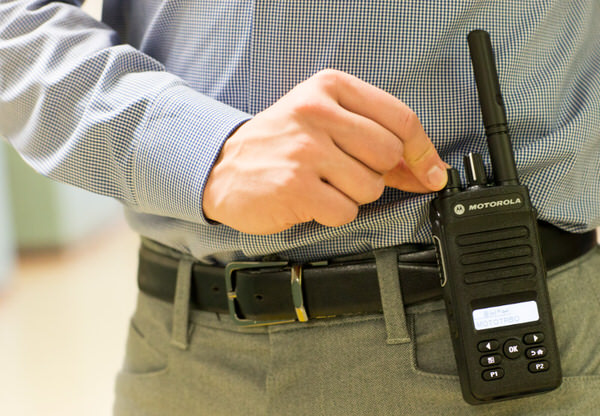
Superior Durability
Have you ever seen one of those “drop tests” for smartphones? People record themselves dropping their phones to see how durable they are even after slamming into the ground. Most of the time, the screen cracks and some even find the phone stops working all together.
Organizations can avoid staff breaking smartphones by relying on radio communication. Most radios are built to withstand extreme environments and can still be relied upon even after an event that would render your typical cell phone useless. You can drop, drag, dunk or spill a two-way radio and they are virtually indestructible.
More Practical User Interface
It’s not always realistic to use a touch screen when you’re on the job. Two-way radios are simplistic and easy for anyone to use.
One of the biggest issues with using cell phones for organizational communication (like on campus or in the field) is that these devices are designed for so much more than just voice communication. For example, most phones have a user interface cluttered with applications that users in the field or on the job have no use for. This can cause confusion and delays, which are actually avoided by the simple-to-use user interface two-way radios offer. Basically, radios are designed for these environments, phones are not.
Better Suited for Emergency Situations
As mentioned above, cell phones can be rendered useless if dropped or located in a dead spot, both of which can occur in emergencies. Whether it is a man-down situation or a natural disaster, users need to have a communications device designed to function even in an emergency situation. This helps keep the team safe, as well as any who may rely on them.
With radios, you don’t have to worry about getting a busy signal, someone not picking up their phone, or losing service when you are in an emergency situation.
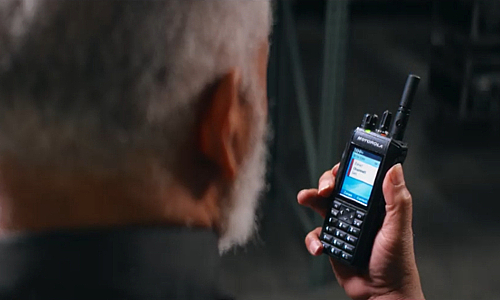
Cost Savings
This one is very simple: those who use cell phones for their communication pay a monthly bill. Those who use digital two-way radios have the option to own their devices, i.e. no month-to-month payments, no extra fees.
Radios are Just More Practical
Cell phones are an incredible tool for many situations. However, they were not designed for organizational communications the way that two-way radios are. Radio communications are the superior choice when compared to cell phones.
Radio communications also reduce operations downtime. No more waiting for your phone to be fixed, trying to get service, getting lost on social media apps, or blaming a lost call on bad timing. Now you can focus on the job at hand instead of your cell phone problems.
Here is a cell phone vs. two way radio comparison:
| Cell Phones | Two Way Radios |
| Potential loss of service from carrier, call can’t get through | Instant connection; no wait time or busy signal ever |
| Monthly fees and data plans can be expensive | No monthly fees. Less expensive than cell phones |
| Subject to service provided by an active cell tower nearby or your charges increase significantly for roaming | Service is always reliable. No extra charges |
| Sometimes can be difficult to use while wearing gloves; not always a user-friendly interface | User-friendly interface, simple to use even with gloves |
| A contract and monthly charges may be required | No monthly contract or roaming charges apply |
| May not work in rural or remote locations High roaming charges when away from the area of service | Works great in remote or rural locations, no roaming charges |
| Fragile, breakable, and subject to water damage | Completely rugged, durable and weather-resistant |
| Can’t do simple instant group calls | Simple and instant group calls by pressing the PTT (press to talk) button |
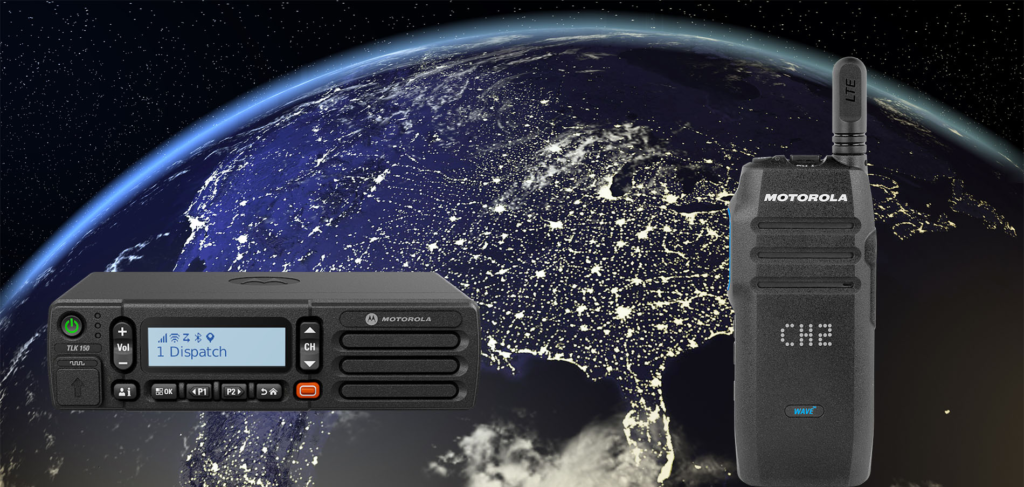
If your business requires “wide area coverage” we recommend you take a look at WAVE two-way radios
WAVE two-way radios complement Motorola Solutions’ traditional Land Mobile Radio (LMR) offerings, which are focused on communication on-site or through regional systems. WAVE two-way radios meet customers’ needs for “wide area coverage” — across the country or across thousands of facility locations. All WAVE two-way radios also can be integrated into supported MOTOTRBO systems to extend communication between traditional two-way radio systems nationwide.
The WAVE two-way radio provides businesses with instant push-to-talk team communications over a nationwide LTE cellular network. This one bundled solution — including the radio, cellular service and software — is built specifically for the demanding needs of businesses with a geographically dispersed workforce.
Growing feedback from customers indicates that smartphones are challenging to use in certain work environments. Employers in certain industries want to provide their workers with devices that do not require log in, have a single button for push-to-talk, have loud speaker volume, are durable and have long battery life. They also are looking for ways to reduce the distractions that can come with smartphones — like texting friends and surfing the internet — while improving employee efficiency for task work. Aligning the right tools based on worker roles is essential for business success.
